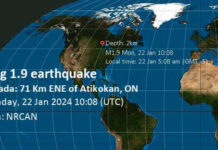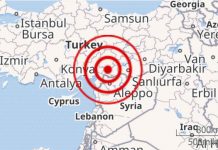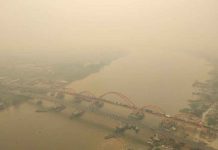* Official death toll rises above 1,500
* Residents left to dig through the mud in the hunt for bodies
* Entire neighbourhoods buried in mud from liquefaction
* Electricity returning, some shops re-opening in hard-hit Palu
By Kanupriya Kapoor and Fathin Ungku
PALU, Indonesia – (Reuters) – A week after a major earthquake brought devastation to Indonesia’s Sulawesi island, Ichsan Hidayat told how the bodies of his sister and her 43-day-old daughter were found under a sea of mud and debris, the mother clutching her baby to her chest.
Hidayat was not on Sulawesi last Friday when the 7.5 magnitude earthquake struck, triggering a phenomenon called soil liquefaction, which turns the ground into a roiling quagmire.
The neighbourhood of Petobo, in the south of the city of Palu, where his sister, Husnul Hidayat, lived with her daughter, Aisah, was wiped out.
Rescuers who recovered the bodies told Hidayat his sister was found holding Aisah close.
“Today, I prayed that they are in a better place. They deserve better,” Hidayat told Reuters as he left Friday prayers at a mosque in the centre of Palu, 1,500 km (930 miles) northeast of Indonesia’s capital, Jakarta.

Worshippers knelt to pray on red carpets put down outside the mosque as the building is unsafe due to quake damage.
Indonesia has the world’s biggest Muslim population but also pockets of Christians, including on Sulawesi, and other religions.
The official death toll from the quake and the tsunami it triggered stands at 1,571, but it will certainly rise.
Most of the dead have been found in Palu. Figures for more remote areas, some still cut off by destroyed roads and landslides, are only trickling in, if at all.
No one knows how many people were dragged to their deaths when the ground under Petobo and nearby areas south of Palu, dissolved so violently.
The national disaster agency says 1,700 homes in one neighbourhood alone were swallowed up and hundreds of people killed.
Hasnah, 44, also a resident of Petobo, has trouble remembering all of the relatives she’s trying to find in the tangled expanse of mud and debris.
“More than half of my family are gone,” Hasnah said as she sobbed. “I can’t even count how many. Two of my children are gone, my cousins, my sister, my brother in law and their children. All gone.”
Homes were sucked into the earth, torn apart and shunted hundreds of metres by the churning mud.
“The earth was like a blender, blending everything in its way,” said Hasnah, who like many Indonesians goes by only one name.

‘THEY LIED’
Hasnah said she has enough food and water but she’s furious that a search and rescue operation in her area only began on Thursday.
“They said they would come with the heavy machines but they didn’t,” she said. “They lied.”
Sick of waiting for help, villagers themselves have been searching, Hasnah said.
“We’ve marked the possible bodies with sticks. You can see a foot sticking out, but there’s no one here to dig them out.”
Rescue workers retrieved several bodies later on Friday.
As the sun set, a mass prayer ceremony was held by Palu’s seafront that was scoured by the tsunami.
“We pray for the ones who have died and for those yet to be found,” the imam said. “Allahu Akbar,” or God is Greatest, responded the congregation.
The first signs of recovery are evident in Palu. Electricity has been restored and some shops and banks have reopened and aid and fuel are arriving.
Vice President Jusuf Kalla, visiting the disaster zone, said recovery would be completed in two years, beginning with a two-month emergency response phase when everyone who lost their house would get temporary shelter.
Doctors have been flocking to help from other parts of Indonesia.
The Budi Agung hospital has 134 beds with about 20 more set up in a tent outside, all full. A hospital ship is also due to arrive.
Doctors said many patients have been at high risk of infection because they were buried in mud.
Rescue workers are pushing into outlying districts cut off for days. Villagers rushed a Red Cross helicopter that landed at Sirenja village near the quake’s epicentre, about 75 km (45 miles) north of Palu, to drop off supplies.
Some quake damage was evident but the coast did not appear to have been battered by the tsunami, a Reuters photographer said.
Sulawesi is one of the archipelago nation’s five main islands, and like the others, is exposed to frequent earthquakes and tsunami.
In 2004, a quake off Sumatra island triggered a tsunami across the Indian Ocean that killed 226,000 people in 13 countries, including more than 120,000 in Indonesia.
(Additional reporting by Tom Allard, Ronn Bautista in PALU, Darren Whiteside in SIRENJA, Agustinus Beo Da Costa, Maikel Jefriando, Tabita Diela, Gayatri Suroyo, Fransiska Nangoy, Fanny Potkin, Ed Davies in JAKARTA Writing by Robert Birsel Editing by Lincoln Feast and Nick Macfie.)







